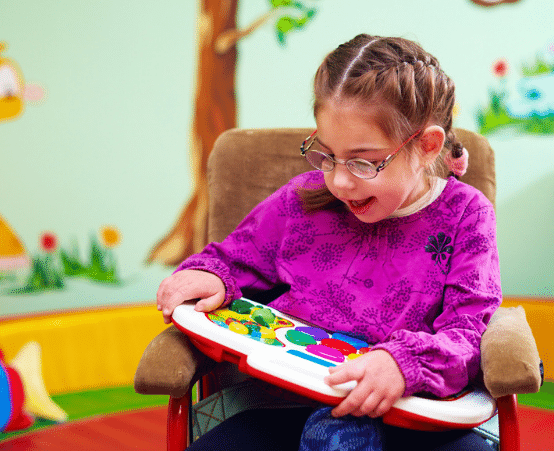Ataxia

Ataxia is the name for a group of conditions that affect coordination, balance and speech.
Ataxia is a movement disorder that can be inherited via parents’ genes or acquired from a brain injury. Treatments and therapies help address symptoms but there is not yet a cure.
Friedreich’s ataxia is the most common type of inherited ataxia; others include spinocerebellar ataxia, ataxia-telangiectasia and cerebellar ataxia from an unknown source (idiopathic ataxia).
Children with ataxia are often unsteady when walking, which can cause frequent falls. In severe cases, children might have to use a wheelchair and may have difficulty with fine hand movement. There can also be slurred speech, trouble hearing or difficulty seeing clearly.
An inherited ataxia means that the child has received a copy of the faulty gene from both parents. For Friedreich’s ataxia, that gene is called FXN.

Who does it affect?
Who does it affect?
Friedreich’s ataxia affects about one in 30,000 people in Australia and is more common in those with European ancestry. Other ataxias are even rarer.
Children usually develop symptoms of Friedreich’s ataxia around age 10.
The average life expectancy for people with Friedreich’s ataxia is about 40 years of age.
The parents of a child with Friedreich's ataxia usually do not know that they carry the faulty gene because they only have one copy, which means they are unaffected.
Our ataxia research
Our ataxia research
Our Friedreich’s Ataxia Clinical Research Program – one of the world’s largest – is conducting exciting research evaluating new treatments to improve symptoms. While searching for a cure, we are also developing treatments that are available immediately, such as intensive physiotherapy or brain stimulation to improve movement and thinking.
Our research focuses on improving outcomes, including measurements of ataxia such as walking, which are critical for clinical trials.
We also provide clinical services and research other types of ataxia.
Impacts of our research

Impacts of our research
- Through the Australian Friedreich’s Ataxia Stem Cell and Gene Therapy Consortium, we are working with the Friedreich’s Ataxia Research Alliance in the USA to accelerate gene therapy clinical trial readiness in Australia and globally.
- Developing and patenting devices and methods to measure ataxia during activities such as eating and drinking. These measurements underpin better care and improve therapy trials.
- Identifying that a compound in grapes and nuts called resveratrol can improve some measures of Friedreich’s ataxia. We are conducting a clinical trial to assess the effectiveness and safety of resveratrol as a treatment and evaluate whether it can slow the condition.
- Developing Clinical Management Guidelines for Friedreich’s ataxia.
- Improving care through research on rehabilitation and early intervention.
Our vision
Our vision
We are committed to finding treatments that will halt the progression and ultimately cure Friedreich’s ataxia.
While we work towards this goal, we want to ensure that every person with ataxia can maximise their physical, emotional, social and vocational function now.



